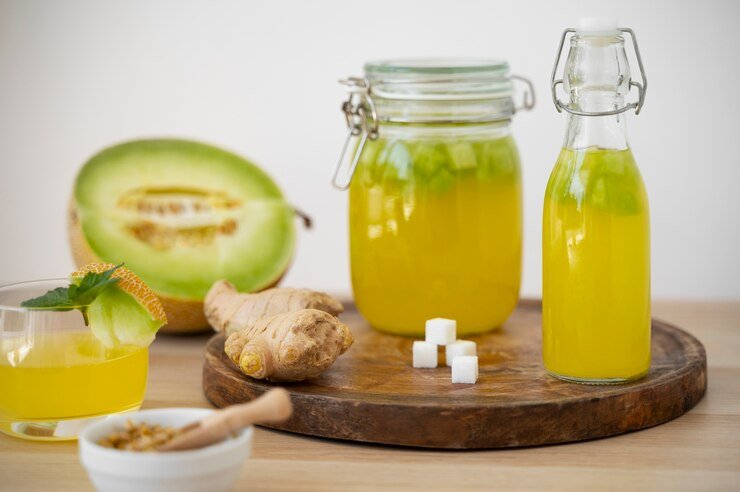Introduction to Honey Dew
Honey dew fruit, with its sweet and succulent flesh, is a summertime favorite that brings a burst of freshness to any dish. Picture this: the sun is shining, you bite into a perfectly ripe honeydew slice, and the juicy sweetness dances on your taste buds. It’s not just delicious; it’s packed with nutrients too! But how do we keep this delightful melon fresh for as long as possible? Proper storage is key to maximizing its flavor and texture.
In this guide, we’ll explore everything you need to know about honey dew—from its health benefits to clever storage techniques. Whether you’re looking to savor each slice or incorporate it into mouthwatering recipes, understanding how to store honey dew properly will make all the difference. Let’s dive in!
Benefits of Eating Honey Dew
Honey dew fruit is not just a sweet treat; it’s packed with nutrients that can boost your health.
Rich in vitamins A and C, honey dew supports skin health and boosts immunity. These antioxidants help combat free radicals, promoting overall wellness.
Its high water content keeps you hydrated, making it an ideal snack during hot summer months. Staying hydrated is crucial for maintaining energy levels and supporting bodily functions.
Moreover, honey dew contains dietary fiber which aids digestion. Including this juicy fruit in your diet can promote gut health and prevent constipation.
With low calories and natural sugars, it’s a guilt-free indulgence that satisfies sweet cravings without the added sugars found in many desserts.
This versatile fruit can be enjoyed on its own or blended into smoothies for extra nutrition!
Factors That Affect the Freshness of Honey Dew
The freshness of honey dew fruit can be influenced by several factors. Temperature is crucial; keeping it too warm can accelerate spoilage, while cold temperatures can help extend its life.
Humidity levels also play a significant role. Excess moisture leads to mold growth, ruining the fruit’s quality. It’s best to store honey dew in a dry environment.
Ripeness at purchase can’t be overlooked either. A perfectly ripe honey dew will stay fresh longer than an overripe one.
Handling affects longevity as well—gentle treatment prevents bruising and damage, which hastens decay.
Exposure to air can cause oxidation and loss of flavor, so it’s wise to keep cut pieces wrapped or stored in airtight containers. Each element combines to determine how long you’ll enjoy that sweet taste of summer from your honey dew fruit.
Proper Storage Techniques for Honey Dew
To keep honey dew fruit fresh, storage is key. Start by selecting a cool spot in your kitchen or pantry. A temperature range of 50 to 60 degrees Fahrenheit is ideal.
If you’ve already cut the honey dew, wrap it tightly in plastic wrap or place it in an airtight container. This helps prevent moisture loss and keeps unwanted odors at bay.
Refrigeration can extend its lifespan even further; just be mindful that extreme cold may alter its texture slightly.
For whole fruits, avoid washing them until you’re ready to enjoy. Excess moisture can lead to premature spoilage.
Check your stored honey dew regularly for any signs of softening or mold and consume promptly if you notice any changes!
Tips for Choosing Ripe and Fresh Honey Dew
Selecting the perfect honey dew fruit can be a delightful experience. Start by examining the color. Look for smooth, creamy skin without any blemishes or dark spots.
Next, check the feel of the fruit. A ripe honey dew should have a slight give when you gently press it with your fingers. It shouldn’t be too hard or overly soft.
Don’t underestimate the power of aroma. Take a moment to smell near the stem end; a sweet, fragrant scent indicates freshness and ripeness.
Also consider its size. While larger fruits may seem appealing, they aren’t always sweeter than smaller ones.
Ask questions if you’re shopping at local markets. Knowing how long they’ve been on display can help you gauge their freshness better than just relying on visual inspection alone.
Delicious Recipes Using Honey Dew
Honey dew fruit is a wonderfully versatile ingredient that can elevate many dishes. One delightful way to enjoy it is by blending honey dew into refreshing smoothies. Combine diced honey dew with yogurt, spinach, and a splash of coconut water for a nutrient-packed treat.
For something more savory, consider making a honey dew salsa. Chop the fruit finely and mix it with jalapeños, red onions, cilantro, and lime juice. This adds a sweet twist to grilled fish or chicken.
Desserts also benefit from this juicy melon. Slice it up and toss with mint leaves for an easy salad that’s perfect after any meal.
You can even grill honey dew! Cut into wedges and place on the grill until caramelized; serve as a unique side dish at your next barbecue gathering. The possibilities are endless when you get creative in the kitchen with this delicious fruit!
Benefits of Eating Fresh Honey Dew
Fresh honey dew is not just a sweet treat; it’s packed with nutrients. This juicy fruit offers hydration, thanks to its high water content. Staying hydrated supports overall health and boosts energy levels.
Rich in vitamins A and C, honey dew helps strengthen your immune system. These vitamins play a crucial role in maintaining healthy skin and vision as well.
The fiber found in honey dew promotes digestion. Eating this delicious fruit can help you feel fuller for longer, making it an excellent snack choice for those watching their weight.
Moreover, the antioxidants present combat free radicals in the body. This contributes to better cellular health and may reduce the risk of chronic diseases over time.
Incorporating fresh honey dew into your diet provides both flavor and nutrition, enhancing meals or enjoyed on its own.
Factors That Affect the Shelf Life of Honey Dew
Several key factors influence the shelf life of honey dew fruit. First, ripeness at the time of purchase plays a crucial role. Overripe honey dew tends to spoil faster, while under-ripe varieties may not taste as sweet.
Temperature is another significant factor. Honey dew should be stored in a cool environment, ideally in the refrigerator. Warm temperatures can hasten spoilage and lead to undesirable textures.
Humidity levels also matter. Excess moisture can promote mold growth, while too little humidity causes the fruit to dry out and lose its juiciness.
Exposure to air affects freshness. Once cut, honey dew should be wrapped tightly or placed in an airtight container to minimize oxidation and preserve flavor for longer periods. These considerations are essential for enjoying this delicious fruit at its best!
Proper Storage Techniques for Maximum Freshness
To keep honey dew fruit fresh, start by washing it gently under cool water. This removes any dirt or bacteria.
Once cleaned, store the honey dew in the refrigerator. A temperature between 36°F and 40°F is ideal for preserving its flavor and texture.
If you’ve cut into the fruit, wrap it tightly with plastic wrap or place it in an airtight container. This prevents moisture loss and keeps out odors from other foods.
Avoid stacking heavy items on top of your stored honey dew to prevent bruising. Additionally, try to consume your ripe honey dew within a week for optimal taste.
Freezing is also an option if you want to save some for later; just cube it first and use freezer-safe bags. Remember that freezing may alter its texture slightly once thawed but retains most of its refreshing sweetness.
Tips for Choosing the Perfect Honey Dew at the Store
When selecting honey dew fruit at the store, look for a smooth, creamy skin. Avoid any that show signs of bruising or soft spots.
Give it a gentle squeeze. A ripe honey dew should yield slightly but remain firm. If it feels too hard, it may not be ready to eat just yet.
Check the color; you want a pale yellow hue without any green patches. This indicates ripeness and sweetness.
Don’t forget to smell your selection! A sweet aroma is a good indicator of flavor.
If possible, choose smaller fruits—they tend to be sweeter than larger ones.
Keep an eye out for organic options as well! They often provide better taste and fewer chemicals in your diet.
With these simple tips in mind, you can confidently pick out the best honey dew for your next meal or snack.
Creative Ways to Use and Enjoy Honey Dew
Honey dew fruit is incredibly versatile and can elevate various dishes. Try adding diced honey dew to your morning smoothie for a refreshing twist. The natural sweetness complements spinach and yogurt beautifully.
For a light appetizer, consider wrapping honey dew slices in prosciutto or bacon. These contrasting flavors create an exquisite balance that will impress your guests.
If you enjoy grilling, slice the honey dew into thick wedges and toss them on the grill for a few minutes. This caramelizes the sugars, enhancing its flavor while giving it a smoky touch.
In desserts, incorporate honey dew into fruit salads or sorbets. Its juicy texture pairs well with mint or lime for brightening up any sweet dish.
Don’t forget about beverages! Blend honey dew with coconut water for a hydrating drink that’s perfect on hot days. Each of these methods showcases this delicious fruit’s unique qualities wonderfully.
Conclusion
Storing honey dew fruit properly can greatly enhance its freshness and flavor. By understanding the benefits of this delicious melon, recognizing factors that affect its longevity, and employing effective storage techniques, you can enjoy honey dew at its best.
Choosing ripe honey dew is equally important. Look for a slightly soft feel near the stem end and a sweet aroma to identify fresh melons. Once you have your perfect honey dew in hand, there are endless ways to incorporate it into your meals—from refreshing salads to smoothies.
By following these guidelines, not only will you maximize freshness but also savor every bite of this delightful fruit. Enjoy the health benefits and versatility of honey dew as part of a balanced diet!







